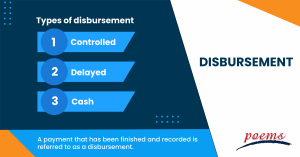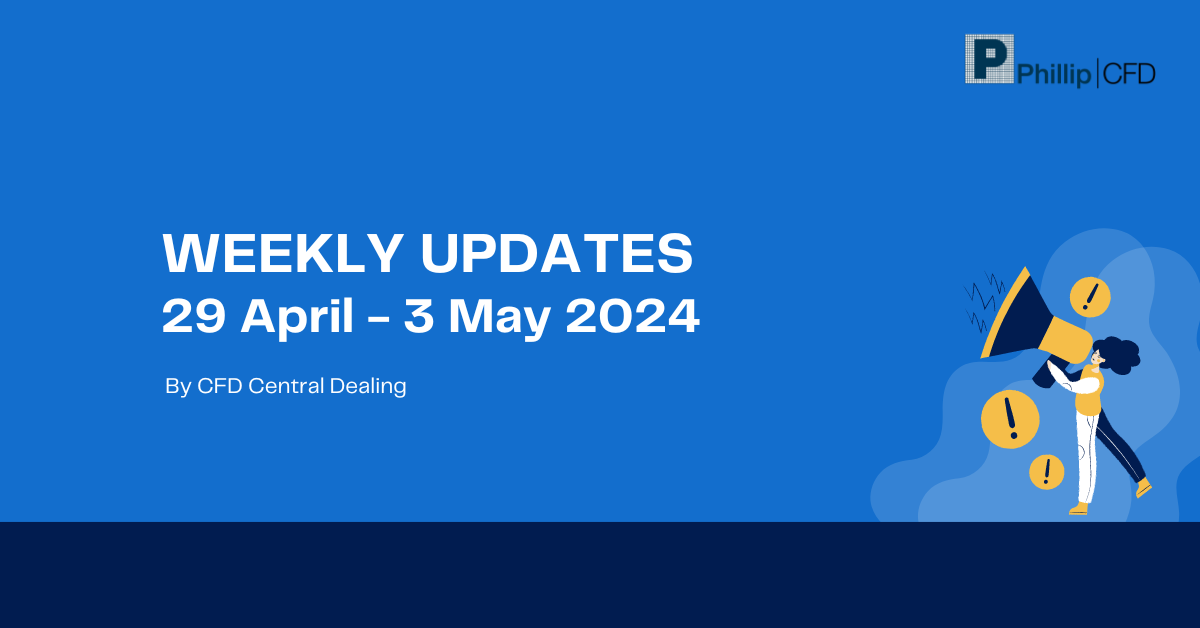Disbursement
Table of Contents
Disbursement
A payment that has been finished and recorded is referred to as a disbursement. In other words, the money has been transferred from the payer’s account to the payee’s account. A key way to monitor the company’s costs in business is to document all cash outflows consistently.
Disbursements are one aspect of cash flow that you should fully comprehend if you want your firm to succeed. If you know how to handle disbursements, you can avoid making mistakes that could result in failed audits, penalties, and other consequences.
What is disbursement?
Disbursing funds, particularly from a public or designated fund, is a disbursement. It frequently refers to the payment made on behalf of a client to a third party, for which the client would later be asked to pay back. Cash outflows result from disbursement. A concern about a cash deficit arises if disbursements exceed receipts or cash inflows.
Disbursements signify the transfer of funds from one account or fund to another. This phrase refers to public or designated funds, particularly in corporations and non-profit organisations. A corporation makes a disbursement when it pays with cash or cash equivalents.
Understanding disbursement
Keeping an eye on the company’s cash flow is crucial while running a corporation. Disbursement refers to any cash the business pays to any entity or individual for whatever purpose.
The business can make these payments all at once or gradually, and could be a full year or a quarter. This payment is tracked because it serves as a record of the company’s financial flow. If the expense exceeds the revenue, the cash flow is negative, and the company could be on the verge of quitting the business.
This early indication could aid the business in future financial management. The company’s bookkeeper is responsible for recording the disbursement, which is done in a general ledger or cash disbursement log. This record comprises the date, sum, payee’s name, mode of payment, and reason for the payment.
How does disbursement work?
Your company makes disbursements over a set period, such as a quarter or a year, and does it in cash or a similar manner. If you apply the accrual accounting approach, you will record your disbursements as they happen rather than as they are paid.
Your accounting department records each transaction during this phase, after which it records them in a general ledger entry or a cash disbursement journal. Your company’s overall cash balance is modified appropriately to reflect the disbursement.
Each entry comprises the following information: Date, payee name, debited or credited amount, payment method, the purpose of the payment, and account code.
Types of disbursement

The following are the types of disbursement:
- Controlled disbursement
Financial institutions give their corporate clientele this kind of service. It enables businesses to examine and reschedule payouts regularly.
- Delayed disbursement
Here, the payout procedure is purposefully prolonged by issuing a check drawn from a bank situated in a remote place, a practice known as remote disbursement. As banks can only process payouts after receiving the actual check, such delays might prevent the amount from being deducted from the payer’s account for up to five working days. Yet, these delays have become more challenging with the acceptance of computerised checks.
- Cash disbursement
They differ from profit or loss since they measure the amount that leaves the business. There are many ways to pay for these reimbursements, including cheques and electronic fund transfers. It may also be a payment made to a third party for clients out of a general or specific fund. The business that made the payment on your behalf then deducts the money as a reimbursement.
Frequently Asked Questions
The terms “disbursement” and “drawdown” have different interpretations in the financial sector. They relate to a money transfer from a bigger account to a particular recipient, which is one of their similarities. Nevertheless, the terms refer to entirely different things.
Drawdowns typically involve receiving money from a retirement account, a bank loan, or money placed into an individual account. On the other hand, all cash outflows, dividend payments, purchases from an investment account, or outright cash expenditures are all considered disbursements.
An account is credited when a disbursement is positive and debited when negative. A negative disbursement could happen if financial aid money is overpaid and subsequently taken from the student’s account.
The bank pays the borrower following verification and permission, known as loan disbursement. It doesn’t take long for loans to be disbursed. The disbursement takes place two to three days after getting the document authorising the house loan. Disbursement means receiving a loan amount in the banking industry.
A refund is not the same thing as a disbursement. Instead, reimbursement and a refund are the same things. The term disbursements refer to a considerably larger group of payments. Reimbursement for out-of-pocket expenses is one of these disbursement payments, though, and it frequently comes from a company’s petty cash account.
Payment is made directly to the producer of a good or service and represents the agreed-upon value of that good or service a party offers in exchange.
To disburse is to distribute funds. The delivery of a loan amount to a borrower, the payment of a dividend to shareholders, or money deposited into a company’s operating budget are all examples of disbursements.
Related Terms
- Trailing Stops
- Exchange Control
- Relevant Cost
- Dow Theory
- Hyperdeflation
- Hope Credit
- Futures contracts
- Human capital
- Subrogation
- Qualifying Annuity
- Strategic Alliance
- Probate Court
- Procurement
- Holding company
- Harmonic mean
- Trailing Stops
- Exchange Control
- Relevant Cost
- Dow Theory
- Hyperdeflation
- Hope Credit
- Futures contracts
- Human capital
- Subrogation
- Qualifying Annuity
- Strategic Alliance
- Probate Court
- Procurement
- Holding company
- Harmonic mean
- Income protection insurance
- Recession
- Savings Ratios
- Pump and dump
- Total Debt Servicing Ratio
- Debt to Asset Ratio
- Liquid Assets to Net Worth Ratio
- Liquidity Ratio
- Personal financial ratios
- T-bills
- Payroll deduction plan
- Operating expenses
- Demand elasticity
- Deferred compensation
- Conflict theory
- Acid-test ratio
- Withholding Tax
- Benchmark index
- Double Taxation Relief
- Debtor Risk
- Securitization
- Yield on Distribution
- Currency Swap
- Overcollateralization
- Efficient Frontier
- Listing Rules
- Green Shoe Options
- Accrued Interest
- Market Order
- Accrued Expenses
- Target Leverage Ratio
- Acceptance Credit
- Balloon Interest
- Abridged Prospectus
- Data Tagging
- Perpetuity
- Hybrid annuity
- Investor fallout
- Intermediated market
- Information-less trades
- Back Months
- Adjusted Futures Price
- Expected maturity date
- Excess spread
- Quantitative tightening
- Accreted Value
- Equity Clawback
- Soft Dollar Broker
- Stagnation
- Replenishment
- Decoupling
- Holding period
- Regression analysis
- Wealth manager
- Financial plan
- Adequacy of coverage
- Actual market
- Credit risk
- Insurance
- Financial independence
- Annual report
- Financial management
- Ageing schedule
- Global indices
- Folio number
- Accrual basis
- Liquidity risk
- Quick Ratio
- Unearned Income
- Sustainability
- Value at Risk
- Vertical Financial Analysis
- Residual maturity
- Operating Margin
- Trust deed
- Leverage
- Profit and Loss Statement
- Junior Market
- Affinity fraud
- Base currency
- Working capital
- Individual Savings Account
- Redemption yield
- Net profit margin
- Fringe benefits
- Fiscal policy
- Escrow
- Externality
- Multi-level marketing
- Joint tenancy
- Liquidity coverage ratio
- Hurdle rate
- Kiddie tax
- Giffen Goods
- Keynesian economics
- EBITA
- Risk Tolerance
- Bayes’ Theorem
- Amalgamation
- Adverse selection
- Contribution Margin
- Accounting Equation
- Value chain
- Gross Income
- Net present value
- Liability
- Leverage ratio
- Inventory turnover
- Gross margin
- Collateral
- Being Bearish
- Being Bullish
- Commodity
- Exchange rate
- Basis point
- Inception date
- Riskometer
- Trigger Option
- Zeta model
- Racketeering
- Market Indexes
- Short Selling
- Quartile rank
- Defeasance
- Cut-off-time
- Business-to-Consumer
- Bankruptcy
- Acquisition
- Turnover Ratio
- Indexation
- Fiduciary responsibility
- Benchmark
- Pegging
- Illiquidity
- Backwardation
- Backup Withholding
- Buyout
- Beneficial owner
- Contingent deferred sales charge
- Exchange privilege
- Asset allocation
- Maturity distribution
- Letter of Intent
- Emerging Markets
- Consensus Estimate
- Cash Settlement
- Cash Flow
- Capital Lease Obligations
- Book-to-Bill-Ratio
- Capital Gains or Losses
- Balance Sheet
- Capital Lease
Most Popular Terms
Other Terms
- Options expiry
- Adjusted distributed income
- International securities exchanges
- Settlement currency
- Federal funds rate
- Active Tranche
- Convertible Securities
- Synthetic ETF
- Physical ETF
- Initial Public Offering
- Buyback
- Secondary Sharing
- Bookrunner
- Notional amount
- Negative convexity
- Jumbo pools
- Inverse floater
- Forward Swap
- Underwriting risk
- Reinvestment risk
- Final Maturity Date
- Payment Date
- Secondary Market
- Margin Requirement
- Mark-to-market
- Pledged Asset
- Yield Pickup
- Subordinated Debt
- Treasury Stock Method
- Stochastic Oscillator
- Bullet Bonds
- Basket Trade
- Contrarian Strategy
- Notional Value
- Speculation
- Stub
- Trading Volume
- Going Long
- Pink sheet stocks
- Rand cost averaging
- Sustainable investment
- Stop-limit sell order
- Economic Bubble
- Ask Price
- Constant prepayment rate
- Covenants
- Stock symbol
- Companion tranche
- Synthetic replication
- Bourse
Know More about
Tools/Educational Resources
Markets Offered by POEMS
Read the Latest Market Journal

Weekly Updates 6/5/24 – 10/5/24
This weekly update is designed to help you stay informed and relate economic and company...

Weekly Updates 29/4/24 – 3/5/24
This weekly update is designed to help you stay informed and relate economic and company...

Navigating the vast world of unit trusts can be daunting. With nearly 2000 funds available...

Predicting Trend Reversals with Candlestick Patterns for Beginners
Candlestick patterns are used to predict the future direction of price movements as they contain...

In the diverse and complex world of investing, unit trusts stand out as a popular...

Back in Business: The Return of IPOs & Top Traded Counters in March 2024
Start trading on POEMS! Open a free account here! At a glance: Major indices continue...

Weekly Updates 15/4/24 – 19/4/24
This weekly update is designed to help you stay informed and relate economic and company...

From $50 to $100: Unveiling the Impact of Inflation
In recent years, inflation has become a hot topic, evoking strong emotions as the cost...












